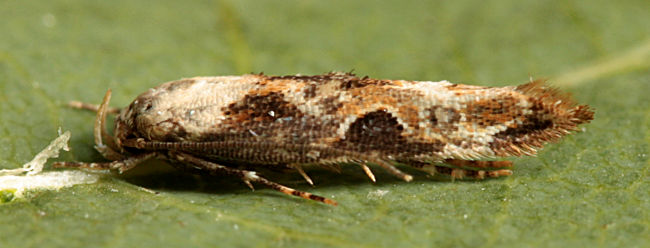Mompha divisella
Checklist Number40.005 [B&F: 0889]
Verification
Record requires retention of specimen until confirmed, and may require dissection. Consult with CMR if unsure
Nationally scarce (Na) in damp woodland, waste ground, open areas and damp shady places in parts of southern Wales and southern England, with records north to Cumbria. In our area it was for a long time restricted to the area of vice-county 11 around Christchurch in Dorset, but in recent years - whether through increased observer interest or genuine increase in range - has spread to a number of localities along the south coast. There is one isolated record in the north of Hampshire. First recorded on the Isle of Wight at Freshwater in 2011, where it is now annual. Wingspan 10-13 mm. Superficially similar to M. bradleyi, but white dorsal streak at base of forewing less strongly irrorate with darker scales and thorax light brown with only anterior edge dark greyish brown (MBGBI Vol 4 part 1). Larva mines stems of Broad-leaved Willowherb, Marsh Willowherb and Hoary Willowherb, forming galls.


The abundance in each month is indicated as follows:
 No records
No records Very occasional
Very occasional Irregular
Irregular Uncommon
Uncommon Off-peak, but not unusual
Off-peak, but not unusual Off-peak, but not unusual
Off-peak, but not unusual Main flight time
Main flight time| J | F | M | A | M | J | J | A | S | O | N | D | |
|---|---|---|---|---|---|---|---|---|---|---|---|---|
| Adult |  |  |  |  |  |  |  |  |  |  |  |  |
| Larval |  |  |  |  |  |  |  |  |  |  |  |  |






